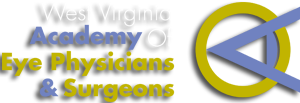- Details
To describe the natural history of dry eye disease (DED), which chronically affects millions of people in the United States.
Read more: Long-term Natural History of Dry Eye Disease from the Patient's Perspective
- Details
To investigate the characteristics of optic disc rotation and ocular parameters affecting optic disc rotation in healthy myopic eyes.
Read more: Characteristics of Optic Disc Rotation in Myopic Eyes
- Details
Leber hereditary optic neuropathy (LHON) is a disorder characterized by severe and rapidly progressive visual loss when caused by a mutation in the mitochondrial gene encoding NADH:ubiquinone oxidoreductase subunit 4 (ND4). We have initiated a gene therapy trial to determine the safety and tolerability of escalated doses of an adeno-associated virus vector (AAV) expressing a normal ND4 complementary DNA in patients with a G to A mutation at nucleotide 11778 of the mitochondrial genome.
Read more: Gene Therapy for Leber Hereditary Optic Neuropathy
- Details
“Practice makes perfect” is an age-old idiom few can disagree with. Yet in ophthalmic surgical teaching, practice has not had the emphasis it has in other motor skill–based disciplines. Even a well-stocked wet laboratory likely does not have a large quantity of eyes available for practicing, limiting robustness of skill development that could be achieved by frequent repetition. The commonly used pig eyes have only superficially similar surgical characteristics to human eyes, reducing the benefit of the time invested.
- Details
The first death I witnessed in medical school 35 years ago was avoidable. The patient had a cardiac arrest during an otherwise routine angiogram. The anesthesia resident on the crash team intubated the patient and managed the airway while the cardiologists ran the code. Unfortunately, the anesthesia machine in the angiography suite was different from those the resident normally used in the main operating room; the knobs were reversed and labeled differently. When he reached over to turn on the oxygen while holding the endotracheal tube in place before it was taped, the resident delivered pure nitrous oxide instead.
Read more: Human Factors and Ophthalmic Drug Packaging: Time for a Global Standard
- Details
I have read with some dismay the editorial in the March 2015 issue of Ophthalmology.1 If the authors are correct in claiming that nonarteritic anterior ischemic optic neuropathy (NA-AION) is not an ischemic process, they must at least answer the following 2 questions: First, why is the optic nerve head hyperemic and edematous at outset (it does not become pale for 3-6 weeks), and why can the condition occur in a disc of normal dimensions or in a myopic disc (as in the case in 10% to 15% of NA-AION patients) and not exclusively in a so-called disc at risk?
